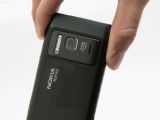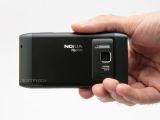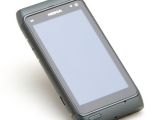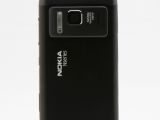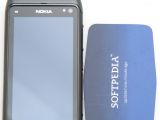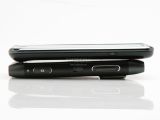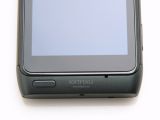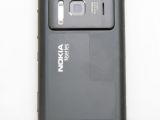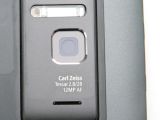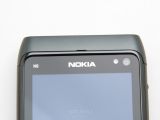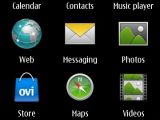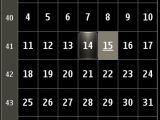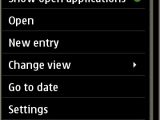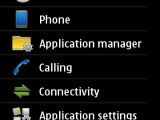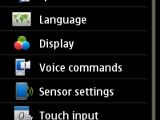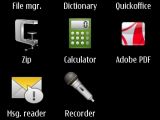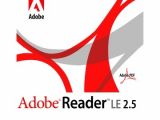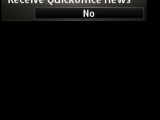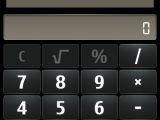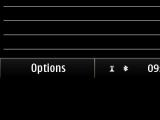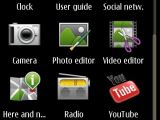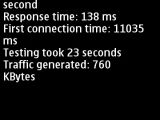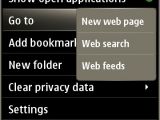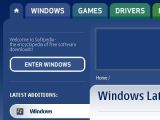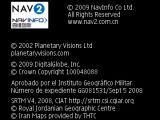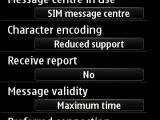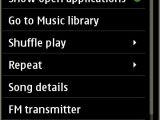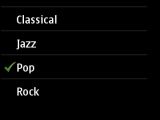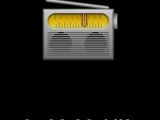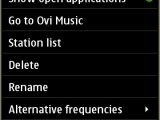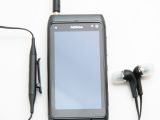The long anticipated Nokia N8 has finally made its way on the shelves and is trying to bring the Nseries to where it belongs, among the best devices in the world. Even though it might sound subjective, it seems that Nokia's Symbian^3 is still far from its Android and iOS competitors.
After testing the device for almost a week, I'm sure that Nokia N8 will not be for everyone. While not one of the best smartphones on the market, the N8 is certainly the best camera-phone at the moment and definitely the Nseries' flagship. Further, this is one of the first Nokia smartphones to feature Symbian^3 OS.
Unfortunately, it seems that the Finnish giant didn't manage to bring it too close to its Android and iOS rivals in terms of functionality, ease of use and eye-candy.
Nokia N8 was announced in April 2010, but it only hit the shelves in October 2010. At the moment customers can choose from five color schemes: Dark Grey, Silver White, Green, Blue, and Orange.
Even though the Nseries is not Nokia's high-end lineup, Nokia N8 can be bought for around $700 USD. The price may vary depending on your location and contract.
style="color: rgb(170,51,51)">Design
If there is one thing different about Nokia N8, it's certainly the way it looks. The smartphone is quite a sight for sore eyes. Nokia used an anodized aluminum alloy that gives the phone a solid look. To make it feel even better, the phone doesn't have a battery cover. That means that you will never be able to pull out the battery unless you shred it to pieces, literally. The generous 3.5-inch touchscren display takes hold of the entire front part of the device. Just above the screen there's a secondary video-call camera and an ambient light sensor, while at the bottom there's a small mic.
All three standard Symbian keys have been replaced by a single button, which was placed a little to the left. That makes it a little bit awkward to reach when you keep the phone with your right hand, but it's perfectly usable for a left handed person. The top side of the phone features a 3.5mm audio jack port, a HDMI port, as well as the usual power off button. The charging port has been placed on the bottom side of the phone. The left side of the smartphone includes the microUSB port, a microSD card slot and a SIM card slot. The dual volume key, the dedicated camera shutter and the lock/unlock sliding key have also been placed on the left side of the phone. The 12-megapixel module camera can be easily noticed on the backside of the phone. In fact the camera makes the phone about 2mm thicker at the top. Even though it might look weird when the phone is placed on plane surfaces, it is preferably to make the whole phone 2mm thicker. There's no protection for the camera in the form of sliding lenses, instead the module camera is covered by scratch-resistant glass. The camera features a Xenon flash, and a small loudspeaker below.The device looks solidly built, compact, but stylish and elegant at the same time. A little bit more work on the ergonomics would've made it even better.
style="color: rgb(255,102,0)">Display and Camera
Nokia N8 comes with a AMOLED 3.5-inch capacitive touchscreen that supports 16 Million colors and 360 x 640-pixels resolution. This is the second Nokia phone to include a capacitive touchscreen, after Nokia X6, which was released on the market at the end of 2009. Even though it's a capacitive display it cannot be compared with Samsung's Super AMOLED displays.
The image shows high quality, but I had some troubles when I tried to use it outdoors in sunlight. The screen is covered by scratch resistant Gorilla glass, which makes it almost unbreakable. Oh, well, not quite, but at least it won't scratch when kept in your pocket with other metallic items.The phone also features built-in accelerometer for display auto-rotation, multi-touch input method, as well as proximity sensor for auto turn-off.
The 12-megapixel camera of N8 features autofocus, mechanical shutter, Xenon flash, geo-tagging and a pretty standard interface. Nokia has partnered with Carl Zeiss for this one, so you will get Carl Zeiss optics. Other notable features include: 1/1.83-inch sensor size, ND filter, and face detection feature. The camera UI is its only downside, as it seems old and obsolete, but you will be getting the usual settings: White balance, ISO, Colors, Contrast, Sharpness and Scene modes.
One of the main reasons that makes Nokia N8 the best camera phone is the embedded 1/1.83-inch sensor, which is bigger than Samsung Pixon's 1/2.5" sensor, previously known as the best camera-phone on the market. Further, another interesting thing is the processing software of the camera, which barely interferes with the pictures. Even though this should be translated in more noisy picture, unresolved detail and/or color degradation.Thanks to the excellent Carl-Zeiss lens, the camera's module doesn't need to sharpen or aggressively suppress the noise on the pictures. The result is more positive than I have expected. Instead of getting worse pictures than Pixon's sharpened, but less detailed pictures, we get very natural pictures with little noise and fine detail.
When using the camera in low light condition you'll be noticing a slight foggy background that stretches over the picture. I recommend turning off the Xenon flash for better results, but then you will have to keep the phone tight, otherwise you will get blurry pictures.
The maximum resolution that users can set to take pictures is that of 4000x3000 pixels. The maximum resolution that can be used for movie recording is 720p@25fps.
Unfortunately, we got some bad weather here, but even so, check out the samples below for a more accurate opinion about the quality of the photo snapper.
style="color: rgb(153,204,0)">Menu and Software
The N8 is the first Nokia smartphone released that runs Symbian ^3 operating system. If you're expecting innovations or amazing new things, then you will be very disappointed. Lack of time or ideas made Nokia engineers continue the Symbian project, which turned in the end in Symbian ^3, which is still far from its main competitors, Android and iOS.
At first glance, one can notice the main homescreen, which is now stretched on three panes. Users will now be able to use any of the three homescreens to add widgets, shortcuts, contacts, or favorite websites. The interface is now a little bit faster during browsing and more responsive. The latter is due to the removal of the “touch-to-select-touch-again-to-open” approach, that was specific to all Nokia touchscreen phones. Unfortunately, there are a lot of things that are not user-friendly or intuitive, but I should probably overlook it as this is Nokia's first try on Symbian ^3. The same block-like layout for the homescreen had been implemented, so if you want to add contacts, widgets and other stuff, you can only do it in the form of block. You can change between them or remove them with ease, by tapping and holding on any of them.Kinetic scrolling is also present, so you'll be able to scroll much faster. Clicking near the battery icon, on the upper right corner of the homescreen will give you quick access to the clock, alarms, while by clicking on the connection icon you'll be able to get to connectivity settings.
To bring up the Main menu key, click the only physical key, which is placed in the left part, under the screen. The key can also be set to highlight when you receive a message or you missed a call. You can find the option into the Setting menu, under the Notification lights menu. The main menu can also be rearranged to look like a grid or list, but I wouldn't recommend the latter option as you won't have all the icons in front of you and you will lose time scrolling through the programs. You will find applications that come pre-installed with the phone together with the Clock, Photo and Video editor, User guide, Social networking services, YouTube client, Search, Ovi music, Office, Notes, Mail and other Symbian-specific functions.Some of the key applications that come pre-loaded with Nokia N8 include: complex calendar, calculator, converter, file manager, recorder, Adobe PDF, QuickOffice, Zip, Dictionary, Message reader. There's no media sub-menu, but you get some dedicated apps under the Music menu: music player, Stereo FM RDS Radio, Podcasts, and Music Store.
Unfortunately, you will have to pay to upgrade the QuickOffice application in case you want to create new documents. Overall, I believe that it still has a lot to work in order to come out with something competitive. At the moment Symbian ^3 is definitely a work in progress. The main downside of the operating system is the fact that it doesn't give the user quick access to some of the most used applications. When you have to click four or five times just to be able to introduce a link in the integrated web browser, or when you have to write a simple message, then you definitely have a problem. Of course there's some improvement compared with Symbian ^1, such as the beautiful graphics and responsive interface, but there are still a lot more things that need to be done if Nokia wants to really take on Android and iOS.style="color: rgb(153,51,102)">Communication
Nokia N8 is a quad-band GSM (850 / 900 / 1800 / 1900) handset, HSDPA 850 / 900 / 1700 / 1900 / 2100 (10.2 Mbps) compatible, which features GPRS class 33, EDGE class 33 . The smartphone is a real “swiss knife” when it comes to connectivity. It has all the possible tools that one would need on the go. Wi-Fi 802.11 b/g/n, UPnP technology, Bluetooth 3.0 with A2DP, microUSB v2.0, USB On-the-go support, HSDPA, 10.2 Mbps, HSUPA 2.0 Mbps offer users enough connectivity options for any budget.
The USB On-the-go feature is extremely useful, especially if you're an active person who likes to travel a lot. Basically, you will be able to attach an USB stick to the phone, or even connect another compatible smartphone directly to the N8 through an USB cable. There's no list of the compatible phones, but most Nokia phone will work, while others like Motorola Milestone won't. I was surprised to be able to connect a Samsung Galaxy S device to the Nokia N8 through the microUSB cable.The integrated browser is the same that you can get in the older N97 phone, but got small improvements and bug fixes. It has now full Flash Lite 4.0 support, kinetic scrolling and pinch to zoom. Other features included in the browser: auto fill-in, RSS reader, download manager, password manager, pop-up blocker.
The handset features a GPS receiver, which works in conjunction with Ovi Maps 3.0 Touch. Even though Nokia isn't known for its GPS chipsets, this one is really good. I have tested the localization times and noticed that Nokia N8 is pin pointing your locations in a matter of a few seconds, and that, even when you're inside a building. The built-in GPS receiver features the A-GPS function, which makes localization even faster. In terms of messaging, the phone offers a complete solution, accepting all available message types. The message client works with POP3, SMTP, and IMAP4 protocols, and supports more than one email account. Also, it can download headers or full emails, and supports attachments. There's a nice feature that will turn your text message into MMS automatically if you insert a clip, or into an email if you fill in the “To:” field with an email address. The quad-band (GSM 850 / GSM 900 / GSM 1800 / GSM 1900) network compatible smartphone has a very good GSM signal reception. The sound is very good at both ends, and pretty loud too. The vibration alert is somewhat low in intensity.style="color: rgb(170,51,51)">Processor and Memory
Nokia N8 is powered by and ARM11 family processor running at speeds of up to 680 Mhz, and also includes a 3D Graphics HW accelerator. The device works pretty smooth, without having the usual hiccups and lags when the web browser was running in the background.
The smartphone also features 16GB internal memory, as well as 256 MB RAM and 512 MB ROM. The memory can be expanded up to 32GB, thanks to the hot-swappable card slot.style="color: rgb(255,102,0)">Multimedia
The smartphone features a newly designed good looking music player, which is now including a Cover-flow album art feature. The rest of the settings are also there, such as: pre-installed equalizer modes (Bass booster, Classical, Jazz, Pop and Rock), Balance, Loudness and Stereo widening. Sound quality is simply exceptional, so N8 can be used as a music phone with no problems at all.
The device features Radio FM with RDS function, as well as a FM transmitter. Reception is very good, and sound is above average. The Bluetooth 3.0 with A2DP support enables you to listen to music wirelessly.
The included video player comes with DivX and XviD codecs, but it won't display subtitles. This is one of the new things that you get with the device. Add to that the HDMI port and you get yourself a real portable multimedia studio. I only got one “System error” message after running about 5-6 short trailer movie, but I would put it on the fact that my unit was a test sample.
All in all, Nokia N8 includes stellar multimedia features, so customers have one more reason to try it out besides the excellent camera.style="color: rgb(153,204,0)">Battery
The 1,200 mAh Li-Ion (BL-4D) battery has an officially stated life expectancy of 390 hours in standby (400 for 3G) and of about 12 hours and 30 minutes in talk time mode (5 hours and 30 minutes for 3G).The manufacturer also states that the smartphone's battery should last about 50 hours of continuous music playback.
Unfortunately, I noticed big gaps between the real numbers and the official ones. The phone's battery is draining fast when the phone is used mildly, and I had to charge it 3-4 times per week. I hope this will be corrected in a future update, because the device is suffering from the same low-battery life issue like Nokia N97. Add to that the fact that the smartphone includes a non-replaceable battery, which means there's no way you can buy another one.
style="color: rgb(153,51,102)">Impressions
There's no doubt about it, Nokia N8 is the best product of the Finnish manufacturer and the flagship of the company's Nseries lineup. Unfortunately, Symbian ^3 is not on par with the phone's hardware, even though it seems that Nokia's engineers tried their best. This makes me wonder how would the smartphone work when running Android.
Anyway, it is clear that Nokia is trying to save what it can be saved from the Symbian OS and give it another face for the users. Even though they seem to be on the right track with Symbian ^3, they're still miles behind its main Android and iOS competitors. The areas where Nokia changed mostly are the design and build, as Nokia N8 is one of the best looking smartphones manufactured by the Finnish company.
The Good
Here it goes the huge list of goodies that the phone features: 3.5-inch AMOLED capacitive touchscreen, 680 MHz ARM 11 CPU, Wi-Fi 802.11 b/g/n, microHDMI port for 720p TV-out functionality, expandable through the microSD card slot, DivX and XviD video support, microUSB port with USB On-the-go support, Stereo Bluetooth 3.0, excellent audio quality, smart and voice dialing.
The Bad
style="color: rgb(170,51,51)">Sales Package
Nokia N8 smartphone Nokia Battery BL-4D Nokia Connectivity Cable CA-179 Nokia Stereo Headset WH-701 Nokia Compact Travel Charger AC-15 Nokia Adapter Cable for HDMI CA-156 Nokia Adapter Cable for USB OTG CA-157 Nokia Stylus SU-36 (selected markets only) Quick start guide
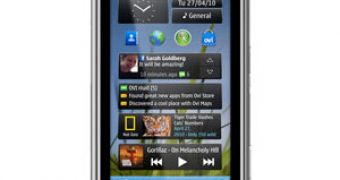
 14 DAY TRIAL //
14 DAY TRIAL // 







